A Glimpse of the Middle Kingdom of Ancient Egypt and What Makes It One of Three Golden Ages

Updated On: February 19, 2024 by Noha Basiouny
According to Egyptologists, ancient Egyptian civilisation lasted nearly three millennia of native reign. It started in 3150 BC when Narmer, the very first pharaoh, reunited the northern and southern kingdoms of Egypt under one crown. In 340 BC, the native rule of Egypt came to an end when King Nectanebo II, the last pharaoh, was defeated by the Persians, who took control of the country after that.
To better study this tremendous civilisation, scholars divided it into eight different periods of time, each characterised by how stable, prosperous and developed Egypt was during it. Then every period was further divided into a number of dynasties that ruled the country throughout that period.
Out of these eight periods, three are considered the golden ages of ancient Egypt, the Old Kingdom, the Middle Kingdom, and the New Kingdom. This was when Egypt enjoyed the best of all worlds, featuring very powerful kings, political stability, border expansion, and a revolution in art, literature, architecture, and religion.
For instance, most of Egypt’s most famous monuments were built during these golden ages. The Great Pyramids of Giza as well as the Sphinx, were constructed in the fourth Dynasty, which ruled during the Old Kingdom, lasting between 2687 and 2181 BC.
Likewise, the construction of the mighty Karnak Temple Complex started in the 12th Dynasty of the Middle Kingdom. The architectural masterpiece of the Mortuary Temple of Hatshepsut was built in the 18th Dynasty, while the famous Abu Simbel Temple in Aswan, characterised by its colossal statues, was constructed in the 19th Dynasty; both dynasties ruled during the New Kingdom.
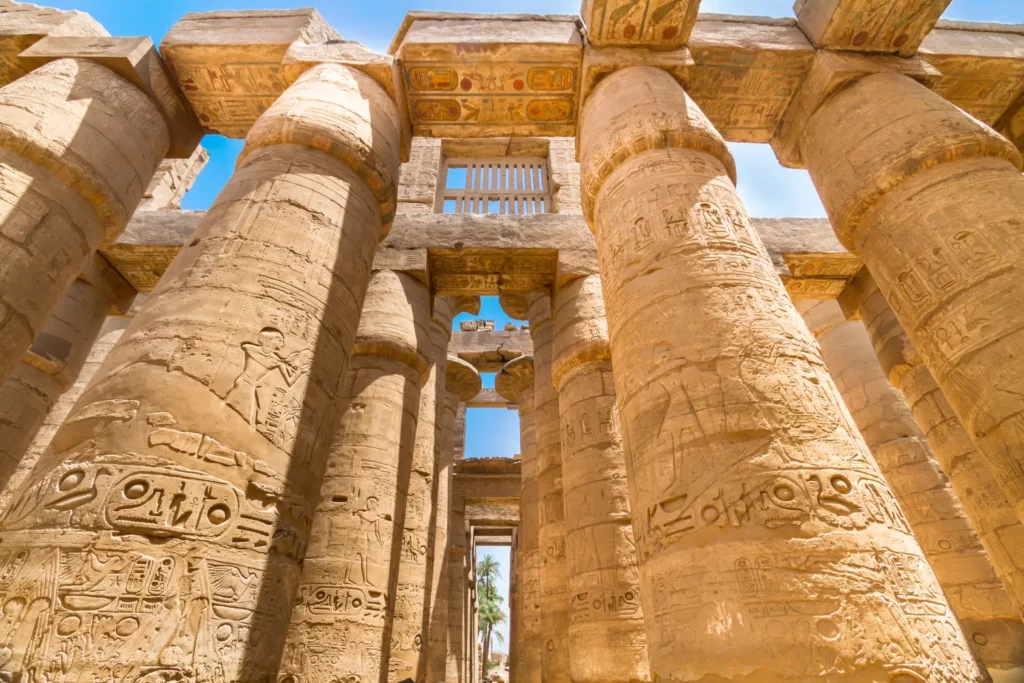
Although all three kingdoms are as unique as they are equally important, in this article, we are going to discuss the Middle Kingdom in particular and explore what makes it one of the three golden ages. So bring along a cup of coffee, and let’s go over four thousand years back in time.
Middle Kingdom of Egypt
The second golden age, the Middle Kingdom of Egypt, is a long period that either stretched for 328 years from 2130 to 1802 BC or a total of 482 years from 2130 to 1649 BC. The duration of this period is disputed because of the dynasties that ruled during it.
While some scholars say it incorporated the 11th, 12th, and 13th Dynasties, others exclude the latter since it was a time of utter chaos and downfall, which in no way could be a characteristic of a golden age, unlike the 11th and 12th Dynasties that were highly stable and prosperous.
To understand the significance of the Middle Kingdom, we must first look into the period preceding it, the so-called First Intermediate Period, which itself followed the Old Kingdom, the first golden age.
One main characteristic of the First Intermediate Period, which comprised the 7th to 11th Dynasties, was the weak and chaotic political situation Egypt fell into. The country was once again divided into two kingdoms. The 10th Dynasty ruled Lower Egypt, the northern part of the country, while the 11th Dynasty ruled Upper Egypt in the south.
Each kingdom had its own capital, Heracleopolis and Thebes, respectively, and both were fighting to seize total power and dominate the entire country. It was complete mayhem.
Laws were violated, temples were destroyed, and statues were taken down and broken.
However, chaos was brought to an end when Mentuhotep II, the sixth pharaoh of the 11th Dynasty that ruled Upper Egypt, raised a strong army, marched to the north and succeeded in unifying both kingdoms again in one country, eventually giving the 11th Dynasty full dominance and ending both the 10th Dynasty and the First Intermediate Period.
Eleventh Dynasty (2130 to 1991 BC)
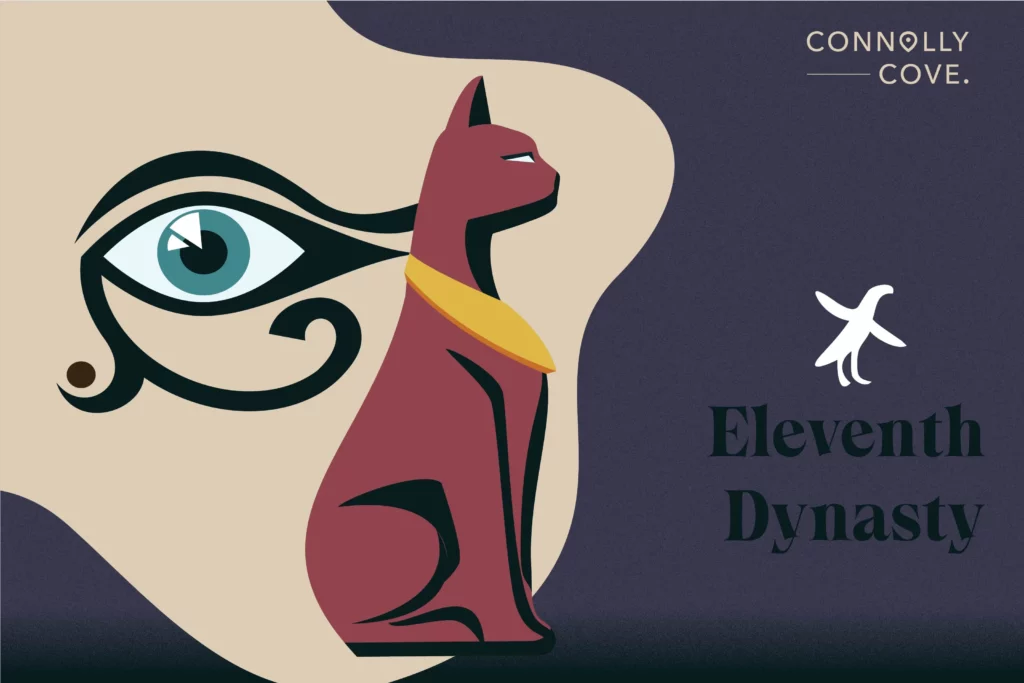
In a way, the 11th Dynasty, which comprised eight pharaohs, belonged to the First Intermediate Period as well as the Middle Kingdom. Since Mentuhotep II, the sixth pharaoh, was the one who unified Egypt, his reign then marked the beginning of the Middle Kingdom, while all his five predecessors fell into the First Intermediate Period.
After the unification, Mentuhotep II worked hard to position himself as a powerful king in order to retrieve a state of law and order in the country. He created a centralised government in Thebes, the capital, where he hired people from Upper Egypt who were loyal to him to give him even more power.
He sent officials from Thebes to all around Egypt to control the regional leaders and make sure they all stayed under one authority, his authority. To solidify his reign, Mentuhotep II also placed himself as a god to be worshipped.
Another one of Mentuhotep II’s top priorities was restoring the territories that Egypt lost during the First Intermediate Period. So he sent military campaigns south to Nubia and northeast to Sinai to reclaim Egypt’s dominance over them. Other military expeditions reached Canaan—this is modern-day Palestine, Jordan and southern Syria and Lebanon.
He also extended trade routes to Mount Uweinat, where borders Egypt, Sudan and Libya meet.
Like all powerful pharaohs, Mentuhotep II ordered the construction of many monuments, most notably temples. This marked a significant architectural transition from the pyramids that were very common during the Old Kingdom to temples that would be a trend during the New Kingdom.
This was the time when the concept of mortuary temples started to emerge. Such temples were built next to the tomb of the pharaoh to show respect to him and recall and celebrate his reign and achievements. They were much taken care of to show the pharaoh’s superiority and excellence.
One of the most remarkable projects during the 12th Dynasty was the Mortuary Temple of Mentuhotep II, situated on the west bank of the Nile opposite the Thebes. It was a pretty innovative design, a masterpiece of architecture and one that later inspired the Mortuary Temple of Hatshepsut.
The Mortuary Temple of Mentuhotep II was one of the largest temples of its time. Part of it was cut from a cliff, and the other was built on a sloped plane. It featured a courtyard surrounded by tall columns and beautiful, distinct decorations made by Theban artists.
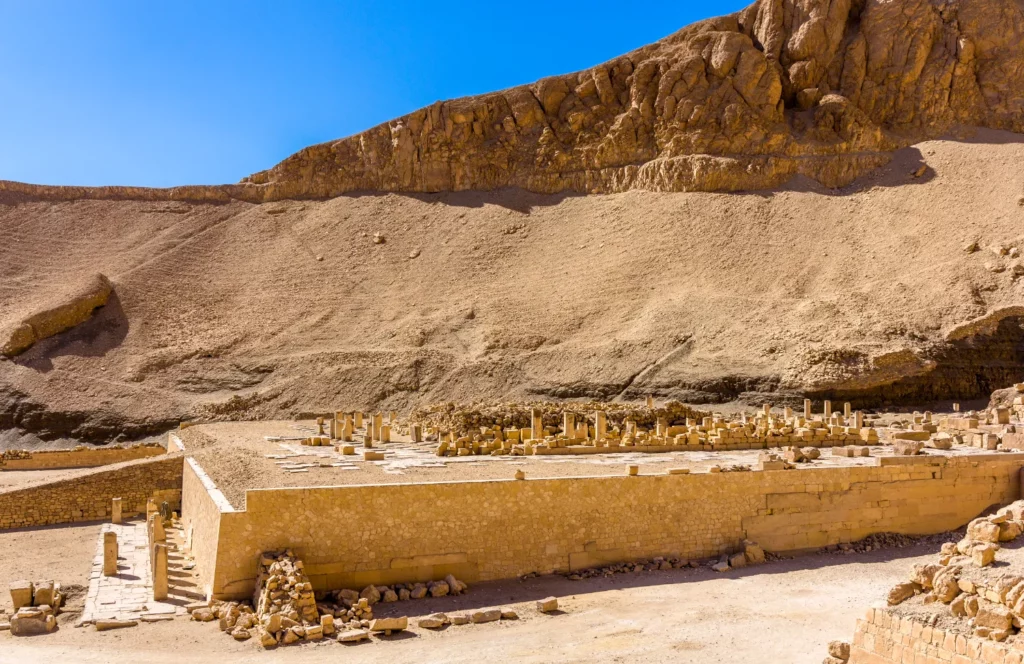
Unfortunately, this temple did not survive, and even when its ruins were discovered in the early 19th century, archaeologists did not pay much attention to them. It was not until the second half of the 19th century that Lord Dufferin and his assistant discovered the tomb of one of Mentuhotep II’s wives nearby and soon understood the importance of the site. Excavations went on until the remains of the temple were defined.
Mentuhotep II died in 2009 BC after ruling for around 51 years. He was succeeded by his son, Mentuhotep III, whose reign was as short as 12 years, at least compared to his father’s.
What highlights this short reign, however, was active trade, best represented by Mentuhotep III’s expedition of 3,000 men to the Land of Punt, which is modern-day Ethiopia and Djibouti. They sailed through the Red Sea and came back with gum, perfumes and incense.
Mentuhotep III is also known for his building activity that featured expanding and renovating existing temples. He also built a mud-brick temple for himself, but this one did not survive either, most probably because of an earthquake that hit Thebes after the king’s death in 1997 BC.
Mentuhotep IV was Mentuhotep III’s successor and the last pharaoh of the 11th Dynasty. There is quite a dispute over the origin of this king. Some scholars say he was Mentuhotep III’s son, and others believe he was the son of Mentuhotep II and Mentuhotep III’s brother.
Like his origin, there does not seem to be much documentation of Mentuhotep IV’s reign. He probably came to power in a period of conflict over succession, and maybe this is why his name was not found among the other kings. He died childless in 1991 BC after a rule of six years, and it is still unknown where he was buried.
Twelfth Dynasty (1991 to 1802 BC)
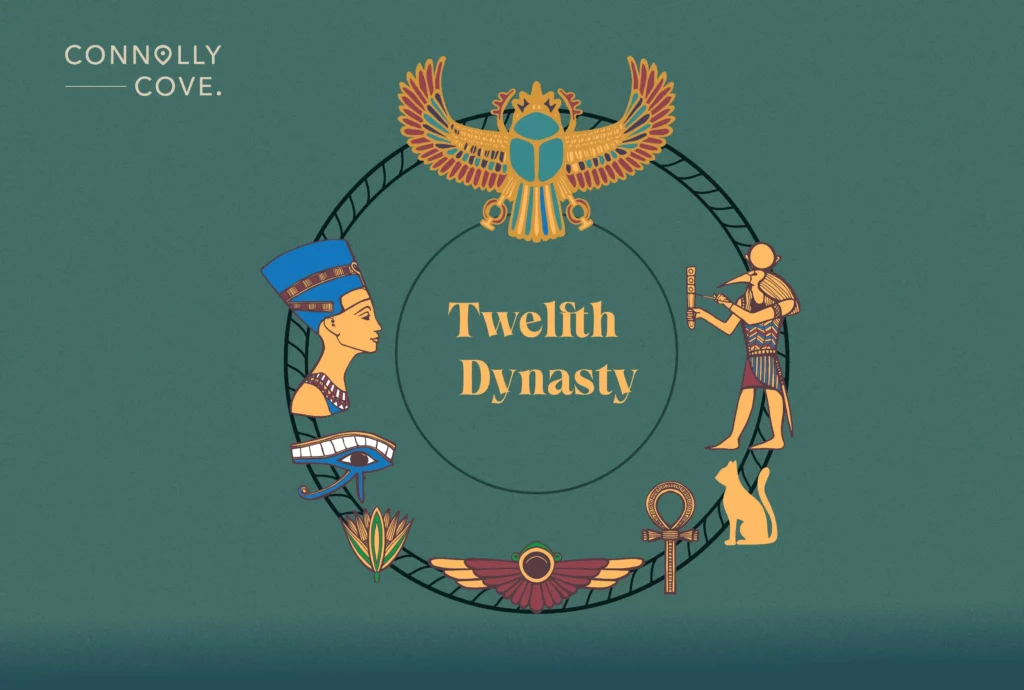
The 12th Dynasty lasted for 189 years, from 1991 to 1802 BC, and comprised eight pharaohs, basically seven kings and a queen. They were all related, pretty much members of the same family, which helped solidify and stabilise their reign. Each king followed in the footsteps of his predecessor and continued to build on his achievements.
This dynasty was the climax of the Middle Kingdom, where Egypt witnessed substantial progress and development in its political affairs, military activity, border expansion and trade. Rulers of this dynasty sent expeditions north to the Levant and south to Nubia and re-established diplomatic relations with different rulers, most notably those of the Aegean Sea.
The founder of the 12th Dynasty was Amenemhat I, who was Mentuhotep IV’s top minister. Some scholars say he overthrew the pharaoh, took over and founded the 12th Dynasty. Others believe he succeeded him after his death since Mentuhotep IV had no children. No one is really sure. But the only sure thing here is that Amenemhat I was not of royal blood.
One of the first things that Amenemhat I did was to build a new capital city, Itjtawy—the location of this city is still unknown—and move the government to it. Then he focused on strengthening the army, sending military expeditions and building fortifications that made Egypt pretty immune to foreign invasion.
Amenemhat I also had a building activity. One of his most common monuments was a pyramid 59 metres high with a base of 84 metres and a slope of 54°. It was made of blocks of limestone and mud bricks.
Amenemhat I ruled for 29 years, died in 1971 BC and was succeeded by his son, Senusret I, who turned out to be one of the most powerful and highly considerable kings of the 12th Dynasty. He ruled from 1971 to 1926 BC, a period during which he made significant achievements and continued his father’s military activity to expand Egypt’s borders. In addition, he sent expeditions to the Western Desert.
One of the most notable highlights of Senusret I’s reign is that he started the construction of the Karnak Temple, which inspired many of his successors to expand it by adding their own monuments around its original site.
The development of this temple continued for over a millennium, and it eventually turned into a vast complex of so many temples, walls, chapels, pylons and obelisks that belonged to tens of kings of the Middle and New Kingdoms. The Karnak Temple Complex has been a UNESCO World Heritage Site since 1970 and a phenomenal must-visit tourist attraction in Luxor.
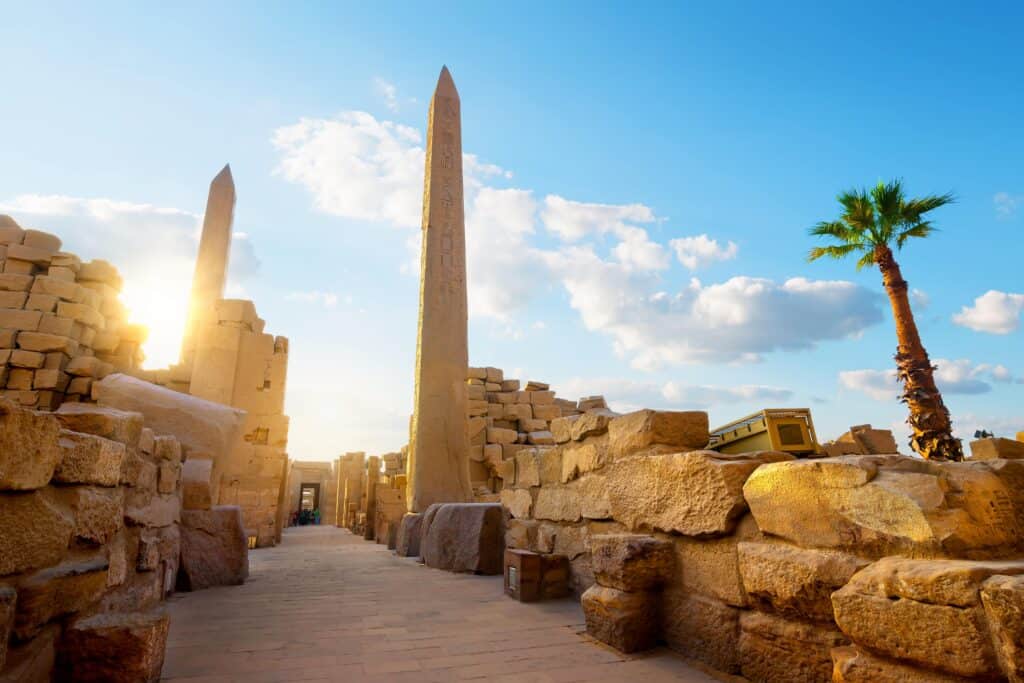
Speaking of that, some of the most famous monuments to look for at Karnak are the Avenue of the Sphinx, the Great Hypostyle Hall, which was constructed during the 19th Dynasty, and the Obelisk of Hatshepsut.
Besides Karnak, Senusret I built many other temples and shrines all across Egypt. He is especially famous for the White Chapel of Senusret I at Karnak.
Amenemhat II succeeded his father, Senusret I, and stayed in power for 35 years. He was pretty lucky, as he reigned during a peaceful period in Egyptian history. Unfortunately, not much is known about him, but some records mention that he donated to build temples, sent mining expeditions to Sinai, and ordered the building of multiple cities and temples.
Three famous monuments that belong to Amenemhat II are a granite sculpture of a sphinx representing him currently displayed at the Louvre Museum, a huge sitting statue found in Pergamon Museum in Berlin, and a 60-metre tall mud-brick pyramid.
When Amenemhat II died, his son Senusret II followed for 15 years then the latter’s son, Senusret III, came to power in 1878. He ruled for 39 years and is known for the Fortress of Buhen, which he built in Nubia.
The sixth pharaoh was Amenemhat III, who sent more mining expeditions and built two pyramids. It was also during his reign that the levels of Nile flood were relatively high, which highly contributed to fertilising the land, supporting agriculture and increasing food production. Eventually, Amenemhat III’s reign became the most prosperous period of the 12th Dynasty and the entire Middle Kingdom.
That is why, together with Senusret III, Amenemhat III made the peak of the Middle Kingdom.
Amenemhat IV followed Amenemhat III and reigned for just nine years. Yet, his reign, too, was poorly documented. What is known for sure is that, unlike his predecessor, the Nile flood levels were way lower than usual, badly affecting agriculture. That occurred toward the end of Amenemhat IV’s reign.
Sobekneferu was the queen who succeeded Amenemhat IV, the first in Egyptian history to rule the country and who would be followed by a few other queens in the dynasties of the New Kingdom, the most notable of whom and by far the strongest was queen Hatshepsut.
Anyways, Sobekneferu was either Amenemhat IV’s sister or wife; there is no record that confirms either claim. She ruled for almost four years, but her reign was, too, not well documented. By her death in 1802 BC, the 12th Dynasty was brought to an end.
Thirteenth Dynasty (1803-1649 BC)
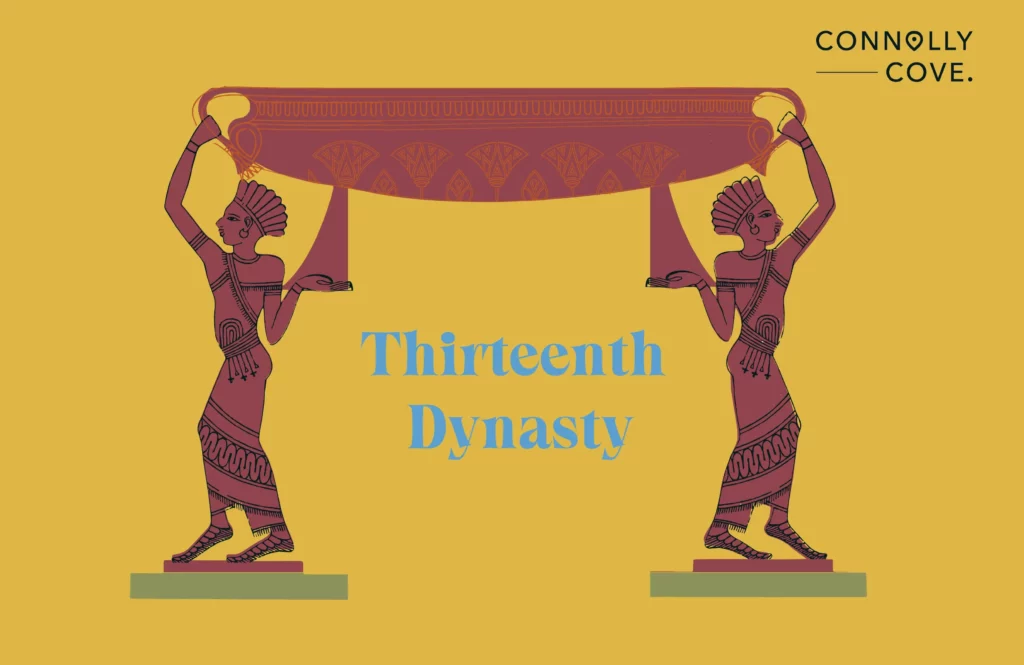
As we mentioned at the beginning of this article, there is a dispute over whether the 13th Dynasty was part of the Middle Kingdom or the Second Intermediate Period. But the fact that it was a time of gradual decline does not match the prosperity Egypt enjoyed during the 11th and 12th Dynasties, which is what we tend to believe more.
The 13th Dynasty lasted for 154 years, from 1803 to 1649 BC, and everything about it is pretty abnormal. It was established by King Sobekhotep I, who was the son of Queen Sobekneferu from the 12th Dynasty.
First of all, the records that archaeologists found describe this time of dynasty as a state of total disorder and chaos that took over the entire country. Over 30 kings ruled in the 13th Dynasty. The reign of most of them was incredibly short, down to four months, and the longest was no more than five years.
Most of those kings were not related to one another, which may indicate there were a lot of conflicts over succession. There is also no adequate documentation of them or their achievements, if there happened to be any in the first place. The government, as well as the military, were weakened, which may have opened the door for corruption and invasion.
Owning to the instability created by the frequent changing the ruling pharaoh, the mayhem Egypt fell into and the gradual downfall in most, if not all, of its affairs, many scholars believe that the 13th Dynasty cannot by any means be part of the Middle Kingdom, but it was instead the beginning of the Second Intermediate Period.
The Middle Kingdom of Egypt was one of the most prosperous periods in ancient Egypt, during which powerful kings ruled, whose legacy still survives to date.
If you ever make it to or are already in Egypt and would like to take a dive into this period, make sure you pay the Karnak Temple Complex a visit and cross the Nile to the west bank to wander around the Mortuary Temple of Hatshepsut that looks like that built by king Amenemhat I. But if your visit is limited to Cairo, you can explore the Old Kingdom by visiting the Great Pyramids of Giza as well as the Sphinx and enjoy seeing many other fantastic attractions.






